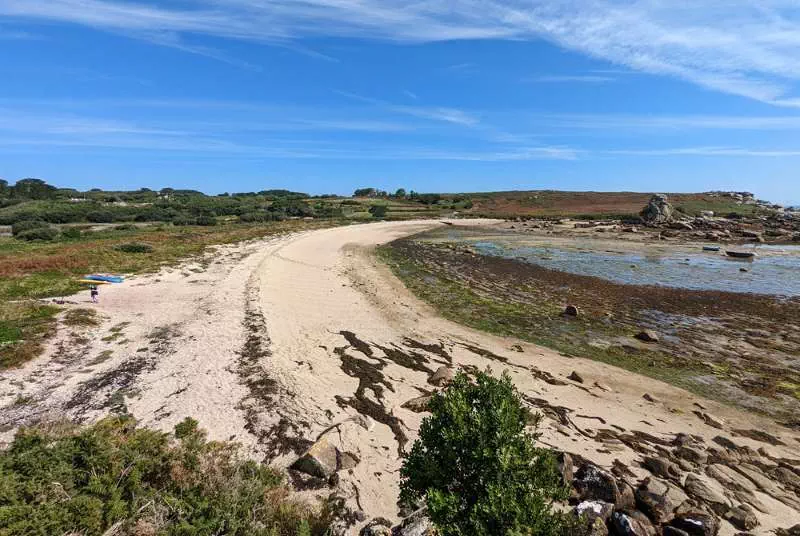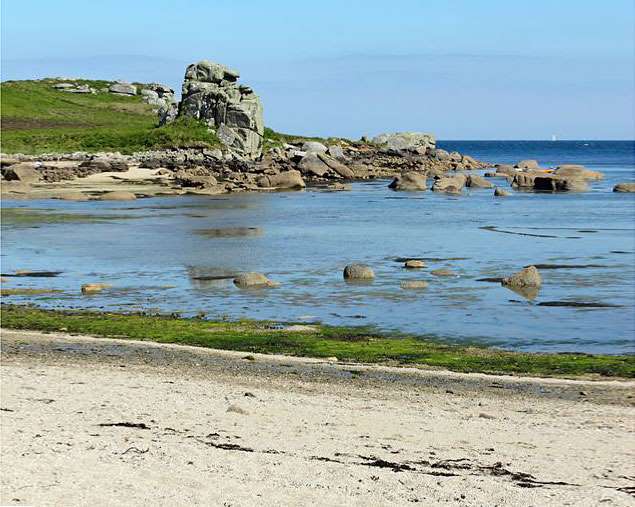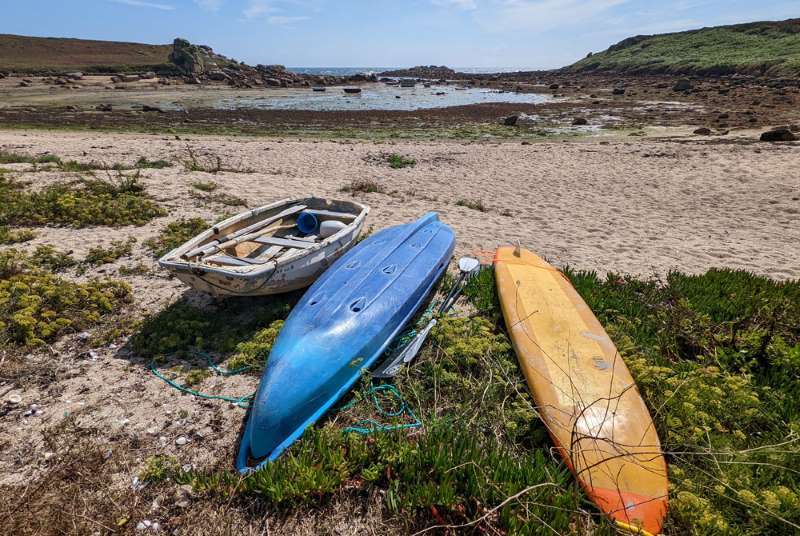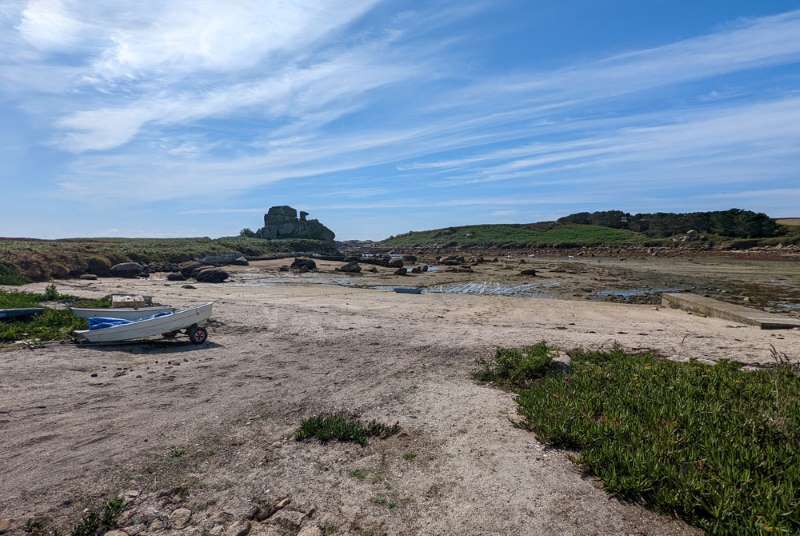Porth Hellick Beach
Compared to many of the other beaches on the Scillies, Porth Hellick may appear a a little uninspiring. The sand isn't particularly fine, the shoreline is rocky and it's a bit of a walk from anywhere (except the airport). But this would be a rather short-sighted view of this inlet. Whilst you might not come here to spend the day sunning yourself this is a place of vast historical and natural interest.
To the north, beyond the Loaded Camel (a rock that looks like a loaded camel!) is Porth Hellick Down. This windswept heath is home to a concentration of Bronze Age entrance graves including the impressive Giant's Tomb - the largest of its kind on Scilly.
The southern boundary of the beach is marked by the Giant's Castle, which is an Iron Age cliff fort.
Behind the beach is a shingle bank which separates acts as a barrier from the sea for Porth Hellick Pool, the largest freshwater body on St Mary's. Along with the surrounding marshland, this area is a Site of Special Scientific Interest (SSSI) owing to the "wide diversity of habitats with several rare and notable plant species".
Porth Hellick is also the site of the Sir Cloudesley Shovell monument. Shovell was the Admiral of the Fleet and aboard his ship the HMS Association when it struck rocks west of Scilly. All 800 men were lost but the legend goes that Shovell was washed up on Porth Hellick beach, alive, if only just. Unfortunately for Shovell the woman who found him took a fancy to his emerald ring and murdered him for it.
OS grid ref.
SV 9251 1061



